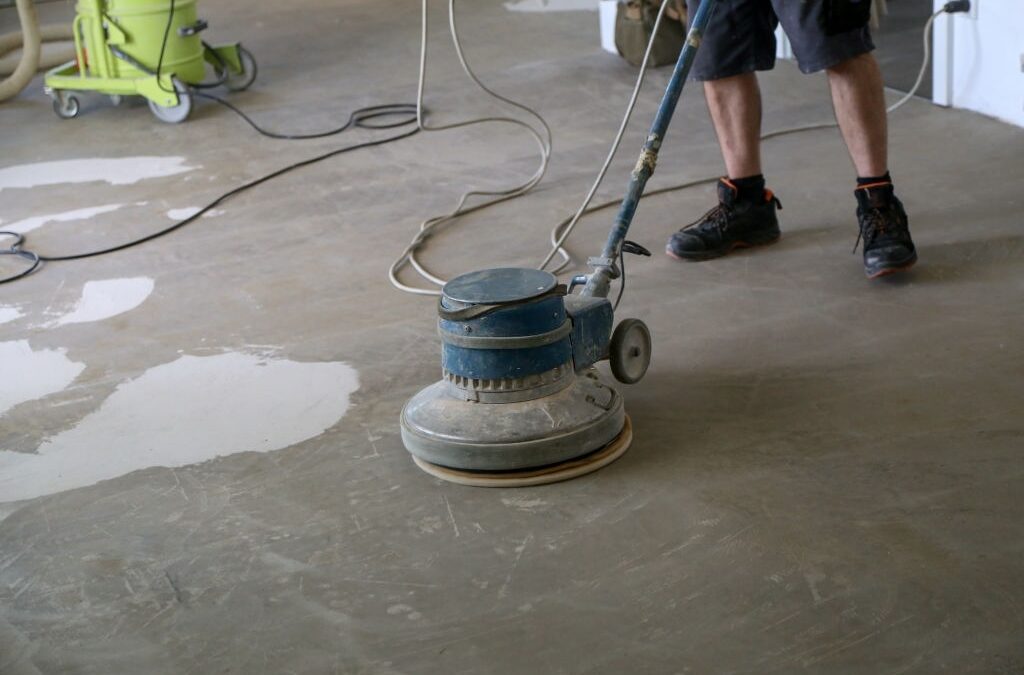Concrete is a durable material commonly used in construction, but it can get stained. Whether it’s oil spills, rust, or food stains, having stained concrete can be frustrating. However, there are effective methods to remove stains from concrete. It’s important to identify the type of stain first, such as oil-based, organic, or chemical stains. Many household ingredients like baking soda and vinegar can be used to create DIY stain removers. By following simple instructions, you can restore the appearance of your concrete surfaces without spending a lot of money.
Identifying Different Types of Concrete Stains
To remove stains from concrete, it’s important to identify the type of stain. There are three main categories: oil-based stains, water-based stains, and rust stains. Oil-based stains come from products like motor oil and can be difficult to remove. Water-based stains, like coffee or juice, are lighter and easier to remove. Rust stains are caused by metal objects and may require special rust stain removers. Tailor your stain removal approach accordingly. For oil-based stains, use a degreasing agent or absorbent materials like baking soda. Water-based stains can be lifted with water and mild detergent. Rust stains may need specialized removers. Test any method on a small area first.
Using Household Ingredients for Stain Removal
To remove concrete stains, white vinegar, and baking soda are effective household ingredients. Vinegar’s acidic properties break down stains while baking soda’s abrasiveness scrubs away tough stains. For vinegar, mix equal parts vinegar and water in a spray bottle, spray onto the stain, let it sit, scrub with a brush, and rinse. For baking soda, make a paste with water, apply to the stain, let it sit, scrub with a brush or sponge, and rinse. These cost-effective methods can restore the appearance of concrete surfaces.
Applying Specialized Cleaners for Stubborn Stains
Specialized cleaners are essential for removing stubborn stains on concrete surfaces. Acid-based cleaners effectively eliminate deep-set stains like oil, grease, and rust. It is crucial to follow instructions and wear protective gear when using these cleaners. Detergent-based cleaners, on the other hand, are great for lifting and dissolving organic stains caused by food, beverages, and pets. Dilute the cleaner according to instructions, apply it to the stained area, let it sit, and then scrub before rinsing thoroughly. By using the right cleaner and following instructions, you can easily restore the beauty of your concrete work and bid farewell to those bothersome stains.
Power Washing and Scrubbing Techniques
Power washing and scrubbing are effective for restoring and revitalizing concrete surfaces. Power washing uses high-pressure water spray to remove dirt, grime, and tough stains like oil, grease, and rust without damaging the concrete. Before power washing, sweep the surface to remove loose debris and prevent it from getting pushed into the pores. Start power washing at one end, moving in a consistent and overlapping pattern, keeping the nozzle at a safe distance. After power washing, use a stiff-bristled brush and concrete cleaner or water and detergent to scrub the remaining stains in a circular motion. Rinse thoroughly with clean water and let it dry completely before use.
Preventing Future Stains and Maintaining Concrete Surfaces
To maintain the pristine appearance of your concrete surfaces and prevent staining:
- Regularly sweep or blow off dirt and debris to prevent particles from causing stains.
- Clean up spills or stains promptly to prevent them from seeping into the concrete.
- Apply a protective sealant every 1-3 years to create a barrier against stains and repel liquids.
- Avoid using harsh chemicals or cleaners that can cause discoloration or damage.
- Use mild, pH-neutral cleaners and avoid abrasive scrub brushes to protect the surface.
By following these maintenance tips, you can keep your concrete surfaces stain-free and looking their best.
Removing stains from concrete can be a simple and cost-effective process if you know the right techniques and ingredients to use. By identifying the type of stain, whether it’s oil, rust, or food-related, you can choose the most appropriate method to tackle it. Household ingredients like baking soda, vinegar, and hydrogen peroxide can work wonders in lifting stains, while specialized cleaners can be used for more stubborn marks.
Power washing and scrubbing techniques are essential for effectively removing stains from concrete surfaces. The high-pressure water can help dislodge dirt and grime while scrubbing with a stiff brush can further break down the stains. It’s important to remember to use protective gear and follow safety precautions when using power washing equipment.
To prevent future stains and maintain the cleanliness of your concrete surfaces, regular maintenance is key. This includes sweeping away debris, promptly cleaning up spills, and applying sealants to protect the concrete. By following these steps, you can keep your concrete looking fresh and stain-free for years to come. You can also hire concrete services for concrete repair and maintenance in order to keep everything looking new.
Need Help?
If you’re dealing with stubborn concrete stains and need professional assistance, don’t hesitate to reach out to the experts at Gatlinbyrd Cement. As a leading concrete contractor in Michigan, we have the knowledge and experience to tackle even the toughest stains. Whether it’s oil spills, rust, or other difficult marks, our team can provide tailored solutions to restore the beauty of your concrete surfaces. Let our concrete company help you revive your concrete and keep it looking its best.
Frequently Asked Questions
What are the most common types of stains found on concrete surfaces?
The most common types of stains include oil-based stains from motor oil or grease, organic stains like food or plant matter, and chemical stains such as rust from metal objects.
Can household items effectively remove stains from concrete?
Yes, household items like baking soda, vinegar, and hydrogen peroxide can be very effective in removing various types of stains from concrete by breaking down the stain's molecular structure or lifting it from the concrete surface.
How do I safely use acid-based cleaners on concrete?
When using acid-based cleaners, it's important to wear protective gear such as gloves and goggles, dilute the cleaner according to the manufacturer's instructions, apply it to the stained area, allow it to sit for the recommended time, scrub if necessary, and rinse thoroughly with water.
What should I avoid doing when trying to remove stains from concrete?
Avoid using overly abrasive tools like steel wool or metallic brushes, which can damage the concrete surface. Also, steer clear of using bleach on colored concrete as it can lead to discoloration.
How often should I apply a protective sealant to my concrete surfaces?
It is advisable to apply a protective sealant every 1 to 3 years, depending on the level of exposure to traffic and the elements, to help prevent stains and extend the life of your concrete.
What are some effective techniques for applying a concrete sealant?
Clean the concrete thoroughly and let it dry completely. Apply the sealant using a roller or sprayer, working in small sections and using a brush to cut in around edges and tight spaces. Allow the first coat to dry as per the manufacturer's instructions before applying a second coat if necessary.

